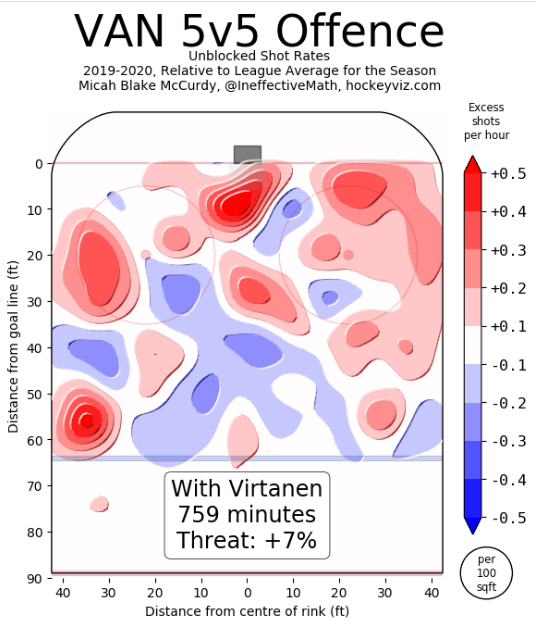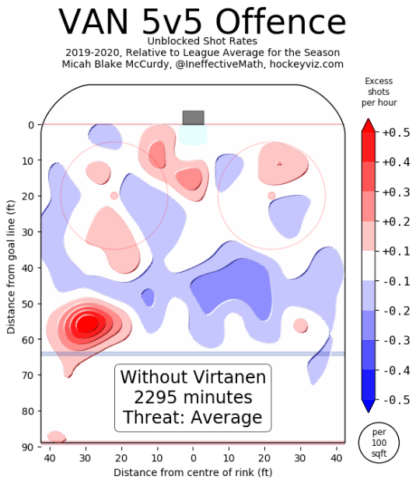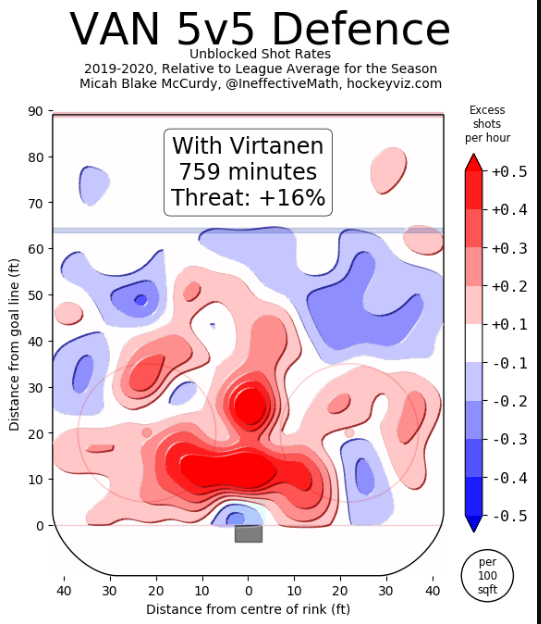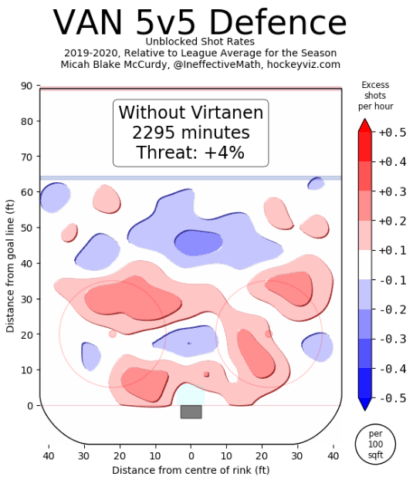Jake Virtanen picked the perfect time for a career season. With his Vancouver Canucks in the thick of a Western Conference playoff race, Virtanen has set new career highs in goals, assists, and points. For a team in dire need of secondary scoring, he has added a much-needed scoring punch to the team’s forward group. The kind of punch the Canucks likely expected when they selected him sixth overall in the 2014 NHL Entry Draft.
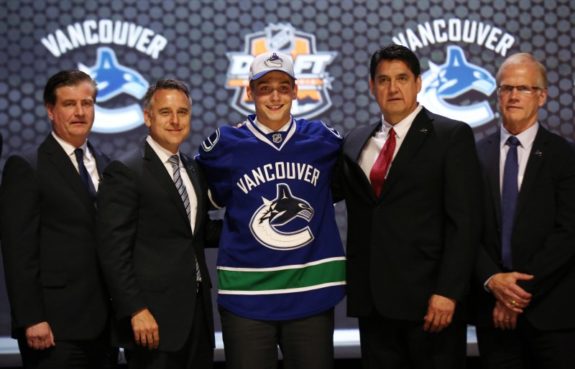
Virtanen’s fans and teammates won’t be the only ones impressed by his offensive outburst this season. As most know, the Canucks are right up against the salary cap and with numerous pending free agents, tough decisions need to be made heading into the 2019-20 offseason. Virtanen, being one of those free agents, could be poised to make a significant raise from his current $1.25 million salary.
Related: Canucks’ Virtanen Turning a Corner
For General Manager Jim Benning and his team, the question moving into the offseason will be what kind of player Virtanen really is. Is he the 20-goal, 40-point power forward from this season or 10-15 goal, 25-point player from the past?
Current Performance
Before projecting what kind of player Virtanen will be in beyond this season, it’s important to note he has made substantial improvements to his overall offensive game this season. He has already set a career-high of 26 even-strength points through 64 games, shattering his former high of 23 last season (in 70 games played). His offensive driving ability is improving as well, as the Canucks generate more shots and chances with him on the ice.
Virtanen has steadily improved his play-driving abilities. As the data from the All-Three-Zones project shows, he generates shots and can get the puck into the offensive zone at an elite rate.
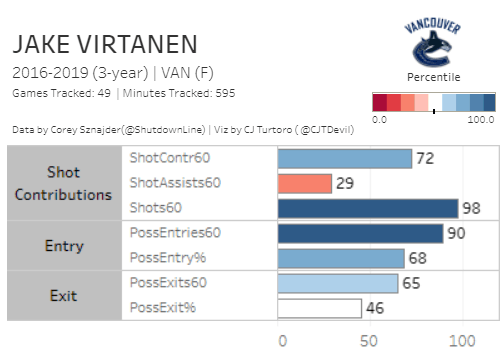
Not only is Virtanen doing the little things right, but he has seen his work translate to more goals. He has scored 2.09 goals per 60 this season, outpacing last seasons’ total of 1.87. His improved goal-scoring ability has dramatically helped this Canucks team get to a point of playoff contention.
Where Virtanen still needs work, however, is his defence. His offence has clearly improved but it came at the sacrifice of his own end.
The Canucks bleed shots and scoring chances with Virtanen on the ice at even-strength, fairing much better when he is on the bench. He is only on the ice for 45.70% of scoring chances but is actually outscoring opponents 30-29. This points to Virtanen getting a little lucky – he should be scoring less than he is.
Future Expectations
It’s clear Virtanen is making steady improvements that have led to tangible on-ice results. Those on-ice results, namely the counting stats, are likely a bit higher than they should be as of now. He has an individual expect goals (ixGF) mark of 9.78, slightly lower than his current even-strength goal total of 12. Moving that to all situations, his ixGF sits at 11.67 compared to his actual total of 18 goals. While this may not seem like a big deal, that extra seven goals would put him down to 28 points, which is an 82-game pace of 35 points.
Virtanen also has an unsustainably high shooting percentage. He is currently shooting 13.1%, while his career average has him as a 9.5% shooter. This kind of percentage-based surge typically isn’t sustainable.
The fluctuation in Virtanen’s performance from this season to last, plus his apparent good fortunes, make it difficult to project what kind of player he really is. The twins from Evolving Hockey were kind enough to share his three-season player comparables based on their model. There is a wide range of players on this list:
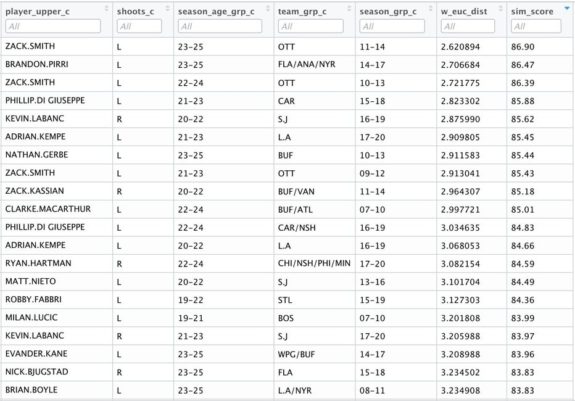
The comparables range from useful bottom-six forwards like Zack Smith or Zack Kassian to strong scoring wingers like Milan Lucic and Evander Kane. Obviously the hope would be for Virtanen to be more like the latter two players, but the truth likely lays somewhere in between.
Based on the improvements to his offensive profile, I’m confident in saying Virtanen is better than the 20-25 point player he has been prior to this season. The improvements to his play-driving ability are legitimate and likely sustainable. He has shown a tremendous ability to generate shots and transition the puck into the offensive zone. This is leading to more goals, which is sustainable.

Virtanen has been good this season, no question about it. Realistically, he is probably about a 35-point player, which is more in line with what is expected of him based on his expected goals total. The 45-point pace he is currently on might be a little high, but it’s entirely possible Virtanen continues his development and sees that mark on a consistent basis.
Regardless of what mark he hits, Virtanen’s development has been fun to watch in Vancouver this season. He is finally starting to realize the potential that made him the sixth-overall pick, and for the Canucks, that is truly exciting.
